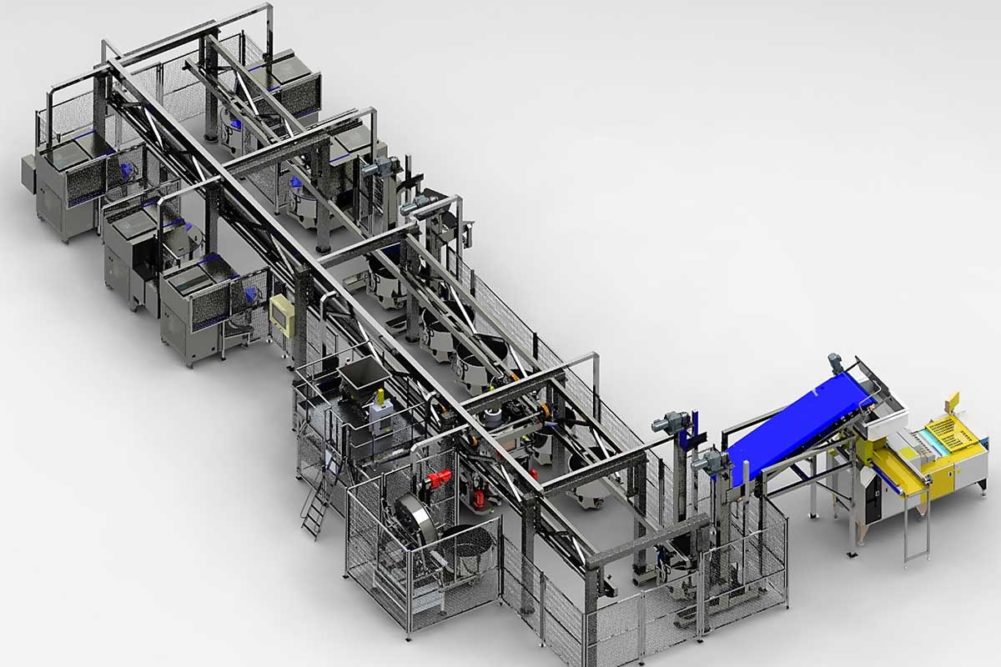Versatile mixing tools and new agitator designs not only help bakers achieve a consistent mix but also branch out into new products that may not have been possible on certain mixers. The agitator defines the mixing action that’s happening inside the bowl, and therefore, what applications a certain technology can do.
“The challenges of mixing are homogeneous dispersion of the ingredients, transfer of energy to the dough to ensure the development of the gluten network and aeration,” said Claire Auffrédou, marketing and digital development, VMI.
Whether a baker is trying to simply blend ingredients consistently, transfer energy to create gluten or aerate a batter will influence the agitator design or mixing tool choice.
For example, Shaffer mixers feature single sigma and double sigma arms as well as triple roller bar mixers. The single sigma quickly incorporates ingredients while double sigma mixers integrate disparate ingredients like in many cookie and bar applications. The triple roller bar is what Shaffer refers to as a “super bowl” mixer design that speeds up dough development and shortens mix times.
“Snacking and eating on the go has grown dramatically as have other product categories like cookies, crackers, health bars, protein bars and granola type snacks,” said Andrew McGhie, director of sales, Shaffer, a Bundy Baking Solution. “Our mixers are used to mix the fruit and other fillings as well as the carrier for extruded dough and cookie products. This has led to single sigma and double sigma arm mixers being in higher demand, and it has led to some development on features of our mixers, including agitator design, ingredient addition and dough discharge.”
The company recently developed a triple sweep agitator for its double sigma arm mixers to incorporate delicate ingredients quickly without damaging them. This opens the door to applications such as nutrition and protein bars and wirecut cookies with inclusions like nuts, fruits and chips.
The company’s mixers have also found use in gluten-free applications. Typically, these doughs rely on Shaffer’s single sigma arm mixers to incorporate ingredients. However, they can be mixed in the triple roller bar as well.
“What we’ve seen in the last few years is that bakers who have a triple roller bar mixer for bread and buns want to know if they really need to invest in a new mixer for gluten-free products,” Mr. McGhie explained. “So they are experimenting with the triple bar mixer.”
This points to why bakers might use an existing mixer for applications it wasn’t designed for; they are testing out products they aren’t fully committed to yet. Until a baking company is sure a new product is successful, it may not be willing to invest in a mixer, so it experiments with the systems it already has. Versatility in the equipment makes that possible.
For vertical mixers, quick-change mixing tools creates that flexibility.
“The many tools play on the combinations of various processes,” Ms. Auffrédou said. “A spiral will stretch the dough and is perfect for making artisan bread with resting time. The whisk will aerate liquid batters and thicken to make creams or waffles. The pallet will act on dry dough, such as cookies, biscuits or granola bars.”
Each tools’ specific geometry is designed to optimize the mixer performance for certain applications. Having many tools at their disposal, bakers can swiftly change over to new products.
Tonelli designed its planetary mixers specifically to be universal across applications while its wide range of tools make changes rapidly.
“They are all quick-change bayonet-type devices with a locking collar system,” said Kevin Wilkinson, North American sales, Tonelli Group. “It’s easy for the operator to change tools from one product to the next, so the baker might be making cake batter for one hour and then switch to cookie dough by removing the batter tool and adding the dough tool.”
The batch nature of this technology also provides flexibility in the process, making time for resting and fermentation, Ms. Auffrédou said.






